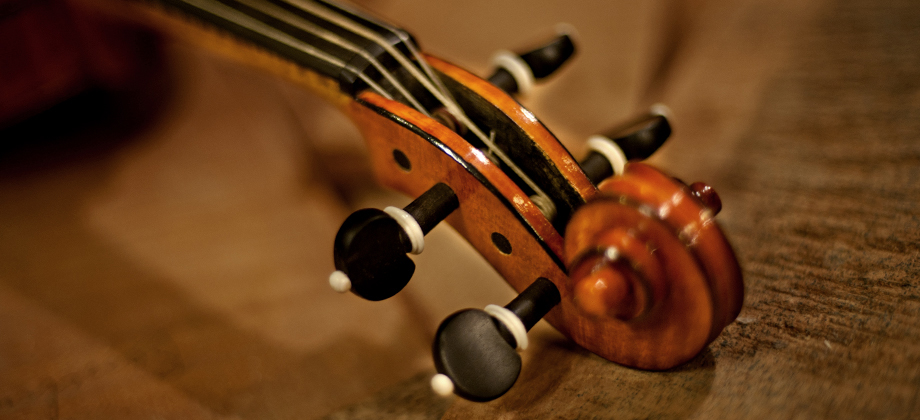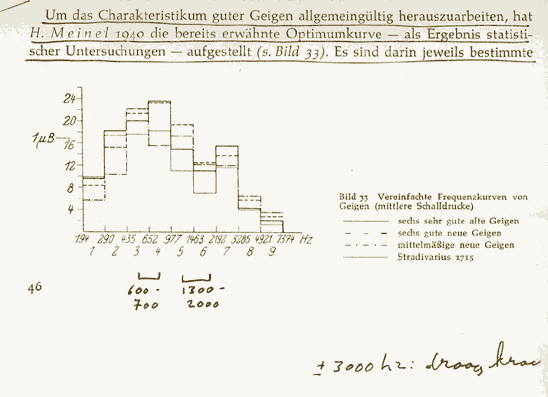the second transition period in violin making: 1970 - present

Changes in technology and musical demands have contributed to the creation of a new phenomenon, the SECOND TRANSITION PERIOD (1970- present).
This article seeks to provide the reader with additional information concerning instruments and bows from the Transition Period with particular emphasis on the Second Transition Period and the changes wrought by the change from gut to high-tech strings, the invention and refinement of carbon-fibre bows and instruments and last but certainly not least, the great strides in terms of research and development in authentic performance practice.
The Classical period in music history was characterized by structure, balance and harmony. Following the impulsive tendencies of the Baroque age, composers such as Haydn and Mozart reaped the benefits of two hundred years of musical richness and experimentation.
The opposite phenomenon can be observed in the development of instruments and bows. As virtuosity reached new heights, performers made more demands on their instruments calling for instruments with: greater carrying power, quicker response and enhanced dynamics. One can observe that the Classical period was a time to search, develop and experiment in terms of instrument and bow making, processes that seem diametrically opposed to the balanced structure so audible in the compositions of that same Period. Thus, the Classical period leading up to the creation of the modern violin and bow (Tourte 1800) in the early 19th century is commonly called, the Transition Period. Instruments by the Dutch violinmaker J. Cuypers provide examples of stringed instruments in which the bas bar is no higher than those made by Stradivari and Amati (approximately 6 millimeters)
To accommodate these demands, luthiers were required to place more pressure on the belly of the violin by means of:
1) A diagonal neck placement
2) A higher bridge
3) A gradual change in A-string pitch (higher)
At the outset of the Classical period, luthiers relied on their modus operandi during the Baroque Period that involved the use of a small, thin bass bars and a significant amount of pressure on the belly of the instrument. The combination of heightened pressure on the top with a small bass bar provides the leading characteristic of the Transition violin: well articulated, penetrating and somewhat straightforward in sound. It was not until the 19th century that various technological changes dictated the use of a thicker, larger bass bar that was able to balance increased pressure on the one hand and provide additional material support on the other hand. Thus in terms of instrument and bow-making, the Classical period was not an age of structure, balance and harmony!!
Turning to bow making, the Classical period can be referred to as a Transition Period during which the Baroque bow made way for the ‘Cramer’ bow (named after the famed violinist Cramer) circa 1770. Within three decades the transition Period came to an end with Tourte’s development of the modern bow.
A half-century would pass before 18th century instruments would undergo the modernization process. J.B. Vuillaume was the most important luthier in this process. Countless old Italian instruments were re-built in his workshop. Larger, more massive bass bars replaced their smaller counterparts and longer, diagonally placed necks replaced the Baroque models.
The aforementioned Transition Period bears comparison to contemporary trends during the last thirty years making the author’s case for a Second Transition Period plausible. A momentous change in terms of the tools of the trade (strings, instruments and bows) has taken place since the great string players and composers of the 20th century have passed away. Examples of these changes, evident since approximately 1970 include:

(Clic on immage to enlarge)
1. The transition from gut strings to high-tech strings. A Pirastro price list dated 1962 shown in Example x announces gut strings as well as steel and alloy mix strings. Young cellists were the first amongst the string players to have problems with gut strings used by such luminaries as Casals, Feuermann and Piatigorsky
2. The development of carbon-fibre bows and instruments.
3. The transition from analogue to digital sound recording .
4. The demand for larger and more penetrating sound on the part of both soloists and orchestral musicians. In the larger orchestras, players have been forced to sit behind sound protection screens and use state-of-the art earplugs when the screens have not offered sufficient protection. Earplugs are a growth market and hearing damage is commonplace for older string players. In the past, violinmakers answered to the demands of their market, the needs expressed by string players. Today’s experts often make thin bridges and sound posts and create modern instruments that can play loudly to meet the demands of the contemporary market.
5. The norms of ‘perfect’ playing promoted and promulgated by the recording industry have spawned countless young talent searches and competitions. Stress replaces personal performance standards and to attain this artificial level of perfection, performers often rely on Beta blockers.
The final consequences of this Second Transition Period are yet to be discovered. Criteria to judge the phenomenon are being discussed and developed at the present time. The old Italian instruments were considered to be better suited for transformation and ‘re-building’ into ‘modern’ instruments than Stainer model instruments. This resulted in a significant price increase for the old Italian instruments and the concurrent depreciation of the Stainer models.
If today’s violin shops would take the challenge and amplify instruments electronically than perhaps the loudest violin, the best amplified model, might well be the most expensive instrument! Nowadays, volume and fast response (the instrument’s playability) are often considered to be more important than sound quality as we have come to know it from the old Italian instruments.
The establishment of the Second Transition Period has led directly to the creation and promulgation of authentic performance practice as it relates to music from the first half of the 20th century.
From daily experience, I have observed that string players arrive at my studio full of questions concerning adjustments with a focus on a ‘new ideal sound’ with an emphasis on loudness. Thin bridges and sound posts, synthetic and/or high-tech strings are all examples of what modern players crave. I am not quite sure if the high string angle placed over the bridge results from a Second Transition phenomenon: K. Leonard suggested that the ideal angle should lie between 157-161 degrees (Mittenwald, 1967) whilst 154-155 degrees was taken as the ideal at the Oberlin workshops (Oberlin, Ohio, USA) in 2004.
Frequency characteristics of the violin have been studied by many experts and expressed in terms relating to sound production by the ‘the human voice’. Desirable, round sounds characterized by the vowels o, u and a have been juxtaposed to the edgy sound characterized by the sounds i,e, and s. A harmonious mix of these sounds in which i,e, and ns are less prevalent than the round vowel sounds (o,u,a) is the sound ideal discussed in leading tomes on the subject. If one compares the tonal range of the violin to the registers of the human voice, we can develop formant characteristics akin to what Winckel achieved using the d’Egville Guarneri del Gesu in 1967 (see Graph nr. ). The ideal ‘great old violin’ model has a large amount of u, a and o sounds (for roundness) and enough i,ns, s and e sounds for projection and brilliance.
The ‘new sound ideal’ prevalent in modern instruments and the demands placed upon these instruments in the Second Transition period increases the total amount of volume disproportionately in terms of the high frequency ranges (i, e, and ns) juxtaposed to the lower ranges. If the string angle is high, the percentage of nasal, edgy sounds (i, e and s) is also high.
If we compare the ‘new sound ideal’ to H. Meinel’s frequency curve charted in 1940 developed to differentiate between good and less good instruments in terms of tone, it appears that the ‘new sound ideal’ moves in the direction of the less desirable instruments in Meinel’s curve. Meinel chose a sampling of six excellent old violins plus one Stradivari instrument to compare to six good new models and six inferior violins. The worst violin in Meinel’s table shows more i,e, and ns and less round vowel sounds than the Stradivari example and the tests on the six good old violins. The new sound ideal so prevalent in the music world since 1970 moves toward the i, e, and ns characteristics at the expense of the cherished round sounds. Thus the graphic representation prepared by Meinel over sixty years ago is reflected in the sound of modern instruments!! Subjective listening proves the point as well: many instruments regardless of whether they have been newly built or adjusted to suit this ‘new sound ideal’ are louder, sharper and less round in sound quality.

Should the contemporary violinmaker go with the prevailing fashion or does he/she have the obligation to educate today’s players? As long as modern practitioners value the greats of times gone by (Heifetz et al.,), violinmakers still have a chance to explain the value of ‘the old ways.’ Interestingly enough, wind instruments have witnessed a similar developmental pattern, however that discussion goes beyond the scope of the present article.
Matthieu Besseling, Amsterdam, 2006
English revision, Heather Kurzbauer
A Short Historical Overview:
Pre 1750 Baroque Period
* straight-set neck
* Small base bar appropriate for a small amount of pressure
* Low bridge, moveable
* A 415
1750-1800 Transition Period
* Classical Style, balance plays an important role in music
* Haydn, Mozart
* In terms of stringed instruments, an age of searching and development
* Every 20-30 years another bow type is developed
* Instruments are characterized by more pressure thus the neck is placed at an angle and the height of the bridge is increased
* Base bar remains small
* A is raised to approximately 430
1800- 1970 The Modern Violin
* Standarized by J.B. Vuillaume and others
* A raised to 435 – 440.
* An era of great performers/soloists (Paganini, Kreisler, Casals, Heifetz, to name a few) increased virtuosity and demands for instruments to react faster and produce more sound
* Steel E string replaces gut E string (beginning of the 20th century)
1970 Second Transition Period
* A raised to 440-460
* Composers (Schönberg/Stravinsky/Shostakovich to name a few) bring ‘classical’ music into the modern era
* Change from analogue to digital recording
* Gut strings are replaced by composite high tech strings
* Development of carbon fibre instruments and bows
* Development of electronic music and instruments
* High volume levels lead to the need for earplugs for orchestral musicians
